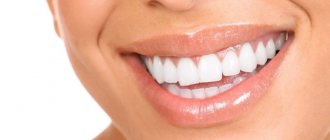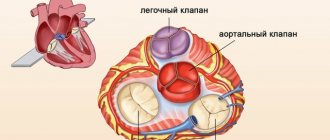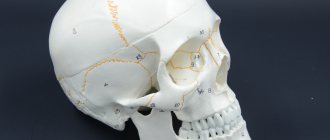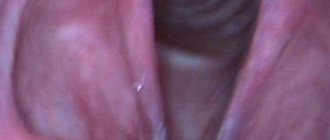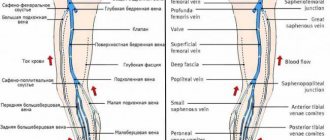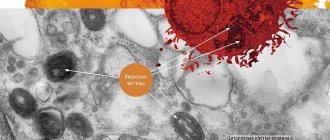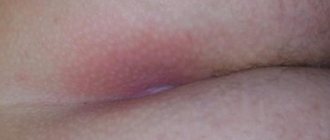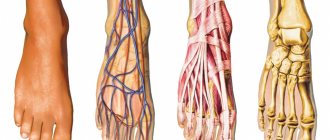What it is
Periodontium is periodontal tissue, the main function of which is to hold the tooth in the alveolus. All periodontal tissues are interconnected, so any changes in the functioning of one or another element inevitably affect the functioning of other elements. The periodontal structure includes periodontium, gums, alveolar processes and cementum. Some dental scientists also include tooth enamel, dentin and pulp in its composition.
The term “periodontium” appeared in dentistry a little over a hundred years ago and has since firmly taken its place in modern dentistry, although in Russia the term “took root” a little later, around the mid-30s of the last century. of periodontology deals with a thorough study of the periodontium, its main functions, structure, and possible diseases .
The structure of the periodontium: anatomy and histology of periodontal tissues
The periodontium (paro (perio) = around, odontos = tooth) includes the following tissues: (1) gingiva (G), (2) periodontal ligament (PL), (3) root cementum (RC) and (4) alveolar bone proper ( ABP) (Figure below). ABP lines the alveolus of the tooth and is inextricably linked to the alveolar bone; On an x-ray, it may appear as a lamina of dura mater. The alveolar process, which extends from the basal bone of the maxilla and mandible, consists of the alveolar bone and the alveolar bone itself. The main function of the periodontium is to attach the tooth to the bone tissue of the jaws and maintain the integrity of the surface of the chewing mucous membrane of the oral cavity. The periodontium, also called the “supporting apparatus” or “supporting tissues of the teeth,” is a developing, biological and functional unit that undergoes certain changes with age and, in addition, undergoes morphological changes associated with functional changes and changes in the oral environment. The development of periodontal tissue occurs during the development and formation of teeth. This process begins early in the embryonic phase when cells from the neural crest (from the neural tube of the embryo) migrate into the primary branching arch. In this position, the neural crest cells form a band of ectomesenchyme under the epithelium of the stomatodeum (primitive oral cavity). Once the uncommitted neural crest cells have reached their location in the jaw space, the stomatodeum epithelium releases factors that initiate epithelial-ectomesenchymal interactions. Once these interactions have occurred, the ectomesenchyme assumes a dominant role in further development. After the formation of the dental plate, a series of processes begin (bud stage, cap stage, bell stage with root development) that lead to the formation of the tooth and surrounding periodontal tissues, including the alveolar bone itself. During the cap stage, ectomesenchymal cells condense against the dental epithelium (dental organ [DO]), forming the dental papilla (DP), which gives rise to dentin and pulp, and the dental follicle (DF), which gives rise to periodontal supporting tissues (Fig. . below). The crucial role played by ectomesenchyme in this process is further established by the fact that the tissue of the dental papilla also appears to determine the shape and appearance of the tooth. If the bell-stage tooth germ is dissected and transplanted to an ectopic site (for example, connective tissue or anterior chamber of the eye), the process of tooth formation continues. A crown and root are formed, as well as supporting structures (cementum, periodontal ligament and a thin plate of the alveolar bone itself). Such experiments confirm that all the information necessary for the formation of a tooth and its attachment apparatus is located in the tissues of the dental organ and the surrounding ectomesenchyme. The dental organ is the formative organ of the enamel, the dental papilla is the formative organ of the dentin-pulp complex, and the dental follicle is the formative organ of the attachment apparatus (cementum, periodontal ligament and the alveolar bone itself). The development of the root and supporting periodontal tissues follows the development of the crown. Epithelial cells of the outer and inner dental epithelium (dental organ) proliferate in an apical direction, forming a double layer of cells called Hertwig's root epithelial sheath (RS). Odontoblasts (OBs) that form root dentin differentiate from ectomesenchymal cells in the dental papilla under the inductive influence of internal epithelial cells (Fig. below). Dentin (D) continues to form in the apical direction, producing the root framework. During root formation, periodontal supporting tissues, including acellular cementum, develop. Some data in cementogenesis still remain unclear, but the following concept is gradually emerging. Early in dentin formation, the inner epithelial cells of the Hertwig root synthesize and secrete enamel-associated proteins, probably belonging to the amelogenin family. At the end of this entire period, the epithelial root sheath becomes fenestrated and ectomesenchymal cells from the dental follicle penetrate these fenestrations and contact the root surface. Ectomesenchymal cells in contact with enamel-associated proteins differentiate into cementoblasts and begin to form cementoid. This cementoid is an organic cement matrix and consists of crushed matter and collagen fibers that are mixed with collagen fibers in the not yet fully mineralized outer layer of dentin. It is assumed that the cementum becomes firmly attached to the dentin through these fiber interactions. The formation of cellular cementum, which often covers the apical third of dental roots, differs from the formation of acellular cementum in that some of the cement blasts are embedded in the cementum. The remaining parts of the periodontium are formed by ectomesenchymal cells from the dental follicle lateral to the cementum. Some of them differentiate into periodontal fibroblasts and form periodontal ligament fibers, while others become osteoblasts and form the alveolar bone itself, in which the periodontal fibers are anchored. In other words, the primary alveolar wall is also an ectomesenchymal product. It is likely, but still irrefutably proven, that ectomesenchymal cells remain in the mature periodontium and take part in the life activity of this tissue.
Structure and functions
The periodontal structure includes:
- Desna . Soft tissues that cover part of the tooth root, protecting it from the external environment. The gums are based on collagen fibers, which take an active part in the functionality of the dentofacial apparatus. The soft tissue of the gums is covered on top with epithelium, which has excellent regenerative properties.
- Alveolar process of the jaw . Bone bed of the tooth. It consists of two bone plates, has a spongy structure and is filled with vessels and nerves.
- Periodont . A special connective tissue that fills the space between the alveolar process and the tooth. Consists of special connective fibers, blood and lymphatic vessels, and nerve fibers.
- Cement . Refers to the tissues of the tooth and covers the root of the tooth. Its structure resembles bone tissue.
- Tooth enamel . The hardest part of the tooth, it covers the surface of the crown of the tooth. It is thanks to the hardness of tooth enamel that we can bite and chew food.
- Dentin . Refers to the tissues of the tooth, it is covered with cement and enamel. Dentin is less hard than tooth enamel, it has a huge number of tubules, as well as a cavity filled with pulp.
- Dental pulp . The softest dental tissue, which is responsible for the innervation and nutrition of the tooth. The pulp consists of connective tissue, nerves and blood vessels.
Functions of periodontium:
- Support-retaining . Fixation of the tooth in the alveolus. Thanks to the ligamentous apparatus of the periodontium, alveolar process and gums, the tooth is securely fixed inside the alveolus in a suspended state and does not fall out of its place even under fairly heavy loads.
- Shock-absorbing . Evenly distributes pressure on the teeth and jaw while chewing food. This is facilitated by the presence of connective tissue and tissue fluid, which acts as a natural shock absorber.
- Trophic . It is provided due to the presence of blood and lymphatic vessels, as well as a large number of different nerve receptors.
- Barrier or protective . It is carried out due to the protective properties of the gum epithelium, the presence of lymphoid, plasma and mast cells, the presence of enzymes and other active substances.
- Reflex . It is carried out using the oral mucosa and the presence of nerve receptors in periodontal tissues. Responsible for the force of chewing pressure during eating.
- Plastic . High ability of periodontal tissues to regenerate due to the presence of fibroblasts and osteoblasts.
Gum structure
The periodontium consists of a complex of tissues that form the entire periodontal space.
- Periodontium is a complex of fibers that hold the dental unit in the socket. The periodontium is located between the cementum and the alveolar wall. Nerve fibers, lymphatic vessels, veins and arteries are also located here, which together are responsible for the proper metabolism of the tooth.
- The gums are the outer part of the entire complex. The gums are the first to bear the brunt of harmful microorganisms that enter the oral cavity.
- The alveolar process is a bone plate that has a spongy structure and serves as a bed for the dental unit.
- Cement is the outer covering and protection of the tooth root.
- Enamel covers the crown of the tooth and is the hardest element of the entire complex.
- The pulp is the main source of metabolism in the tooth. Consists of blood vessels and nerve endings.
- Dentin is a substance located around the pulp and consisting mainly of mineral components.
Etiology and pathogenesis of periodontal diseases
The pathogenesis of periodontal diseases has not been fully established. It is known that at different stages of the development of periodontology, the causes of periodontal diseases such as
- general diseases of the body;
- presence of dental plaque;
- the presence of a large number of aggressive harmful bacteria in the patient’s mouth.
The etiology of periodontal diseases lies in the presence of dental plaque, without which the occurrence of diseases is simply impossible. It is the presence of dental plaque that is the primary factor in the occurrence of periodontal diseases.
Secondary factors include:
- presence of tartar;
- traumatic occlusion;
- the presence of low-quality fillings or dentures in the patient’s mouth;
- anomalies in the position of teeth and bite;
- structural features of soft tissues;
- features of saliva composition;
- genetic predisposition;
- frequent stress;
- hormonal imbalance;
- smoking.
Periodontal diseases
Reasons why gum disease occurs:
- soft and hard plaque on teeth;
- anomalies in the location of dental units;
- poor-quality prosthetics or treatment;
- genetic predisposition;
- reduced immunity;
- diseases of internal organs;
- hormonal imbalances in the body;
- constant stress;
- various bad habits;
- Irregular oral care.
In contrast to the large number of causes influencing the development of periodontal diseases, there are not so many diseases themselves:
- Gingivitis is the initial stage of gum inflammation.
- Periodontitis is an inflammatory process in the gums, gradually spreading to the alveolar processes of the jaw.
- Periodontal disease is a fairly severe form of the disease, characterized by exposure of the roots of the teeth.
- Periodontoma is the formation of tumors in soft tissues.
Differential diagnosis of diseases
The doctor makes a diagnosis based on the results of examining the patient's oral cavity using dental instruments, as well as on the results of an x-ray examination. It is also important to ask the patient in detail about the symptoms, their intensity, and nature. It is very important to conduct a detailed clinical examination of the patient to exclude the presence of other diseases.
Differential diagnosis of periodontal diseases is based on the analysis of radiographic data. With gingivitis, there are no changes in the bone base of the periodontium.
When diagnosing periodontal diseases, so-called indices are often used, which make it possible to determine the degree of the inflammatory process and changes in bone tissue, which allows for the most accurate diagnosis.
Vector device in periodontology
The Vector device allows you to quickly and reliably cure patients of many symptoms. It not only helps to get rid of the disease, but also activates the reserve forces of the periodontium, which allows you to avoid many problems in the future. With the invention of the Vector device, periodontics has reached a qualitatively new level of disease treatment. Literally in one visit to the doctor you can get rid of such unpleasant symptoms as bleeding gums, inflammation and soreness of the gums. Moreover, the treatment is almost painless.
The Vector periodontal device was invented in Germany and is most often used to remove dental plaque, which is the main cause of periodontal disease. Using the device, you can also treat the surface of the teeth with ultrasound before fixing the dentures. However, its main purpose is the treatment of periodontal diseases.
If you have suffered greatly from an inflammatory disease, Vector will help replace curettage, which is why the device is often used for osteoplasty and gingivoplasty.
Treatment
Treatment of major periodontal diseases is as follows:
- removing all plaque and then polishing the teeth;
- treatment of existing carious formations;
- carrying out high-quality prosthetics, if necessary;
- splinting of the dentition (also carried out if necessary);
- treatment of existing common diseases;
- taking vitamins or medications;
- Regular cleaning of the oral cavity not only at home, but also in the dental office.
In the most difficult situations, in addition to the listed treatment, surgical intervention may be necessary.
